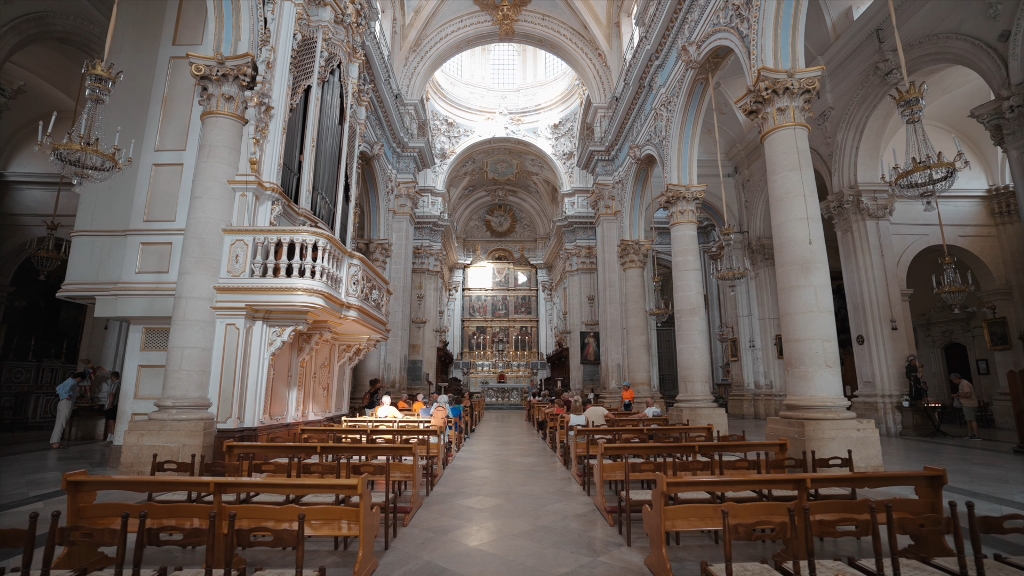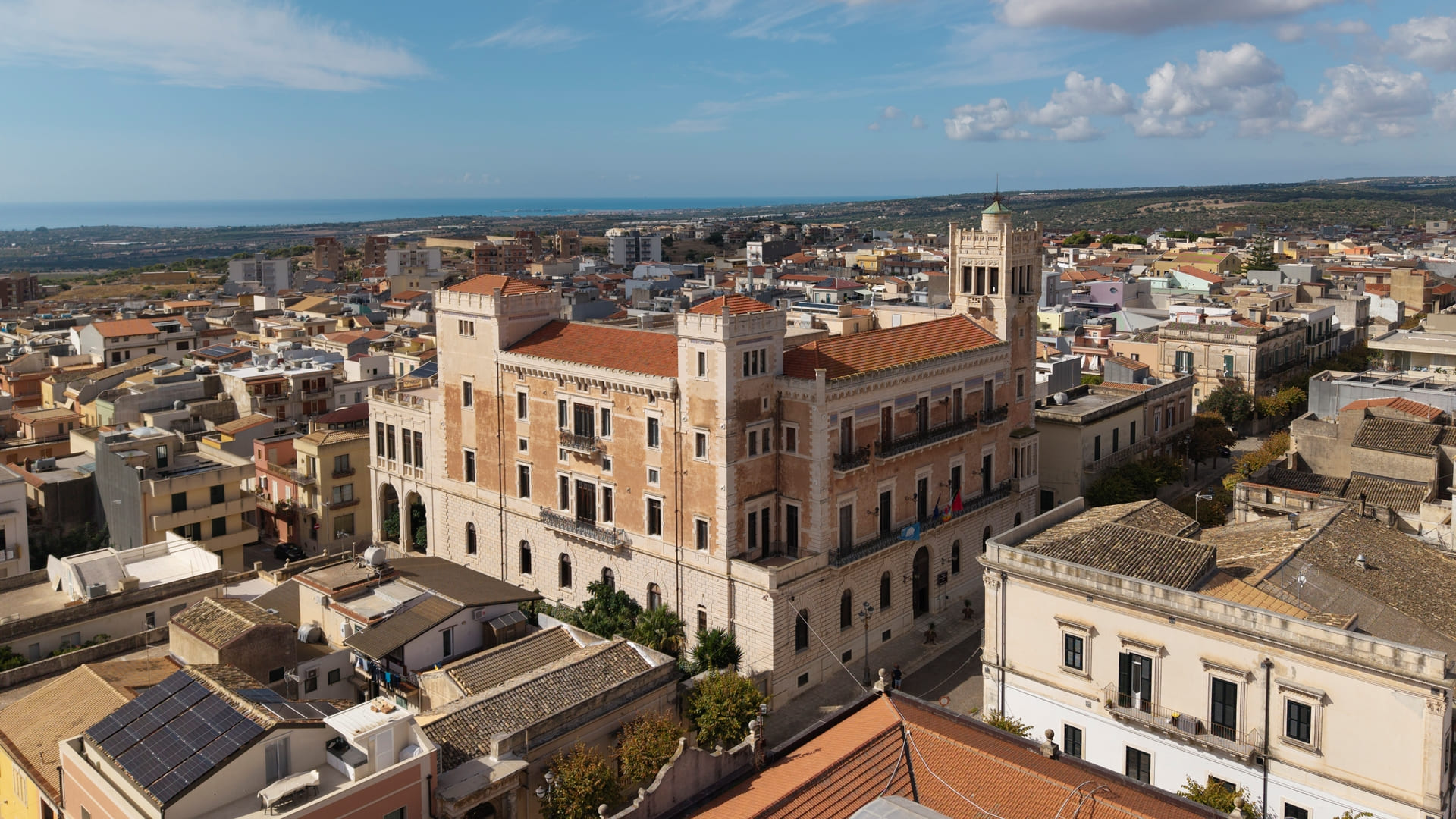Ispica è un perfetto equilibrio tra storia e natura: dalle chiese barocche ai palazzi liberty, fino alla straordinaria Cava d’Ispica con i suoi insediamenti rupestri.
Ispica tra Storia e Natura
Ispica

Natura, Archeologia
1 giorno
A piedi
Fun Fact: Il Loggiato del Sinatra è uno degli esempi più eleganti del barocco siciliano, raro esempio di porticato monumentale in Sicilia.
The route:

Quarry of Ispica and Forza Park
Quarry of Ispica is a river valley stretching about 13 km between Modica and Ispica, featuring rock-cut settlements that date from the Bronze Age (ca. 3000 BC) to the 14th century. The most significant area is Parco Forza, located on a fortified rocky spur known as the Fortilitium. Here you’ll find the remains of the Marchional Palace, medieval walls, the Church of the Annunziata, and hypogean structures such as stables and the famous "Centoscale" (Hundred Stairs) carved into the rock. The area is surrounded by caves, mills, rock carvings, catacombs, and an antiquarium. Today, the site is an open-air museum enhanced by cultural routes, nature excursions, and events like the living nativity scene, making it an essential destination for those who wish to explore the millennia-old relationship between humans and the environment in Sicily.


Palace of Bruno di Belmonte
Palace of Bruno di Belmonte began in 1906, designed by architect Ernesto Basile, one of Italy's leading exponents of the Art Nouveau style. Located in the heart of Ispica's historic center, the palace is considered one of the most significant Art Nouveau buildings in Sicily. Its architecture is a refined blend of eclecticism and neo-Baroque, evident in the façade, which features wrought-iron balconies, floral decorations carved in stone, and Art Nouveau motifs in the windows and cornices. The interior still retains majolica floors, frescoes, and period architectural details that reflect the refined taste of the Bruno di Belmonte family. Currently serving as Ispica's Town Hall, it also hosts cultural events, exhibitions, and institutional meetings, becoming a focal point for the city's public and cultural life. The palace represents a masterpiece of early twentieth-century Sicilian architecture and a symbol of community identity.


Church and Convent of Santa Maria di Gesù
The Church and Convent of Santa Maria di Gesù, located on Via Roma in Ispica, were built around 1515 and represent one of the oldest religious sites in the city. The architectural complex combines elements of Sicilian Renaissance with late Gothic influences, visible in the pointed arch windows and the portal, alongside later Baroque additions following the 1693 earthquake restorations. The convent, historically home to the Observant Friars Minor, includes spacious cloisters, monastic cells, and areas for prayer and communal life. The church interior is richly adorned with frescoes, marble altars, and sacred statues, some attributed to renowned workshops of the time. This place maintains a strong bond with popular devotion and remains active in the spiritual and cultural life of the city, hosting religious celebrations, gatherings, and events that preserve its artistic and historical significance.


Basilica of Santa Maria Maggiore and the Sinatra Loggia
The Basilica of Santa Maria Maggiore in Ispica is one of the most significant examples of 18th-century Baroque architecture in Sicily. Located in the heart of the city, it was designed by Vincenzo Sinatra and stands out for its elegant façade in local stone, harmoniously divided into three tiers, and for the bell tower rising with sober grandeur. The single-nave interior is enriched with fine frescoes by Olivio Sozzi, marble altars, and important sacred artworks, among which the statue of the Immaculate Conception stands out. Adjacent to the church lies the famous Loggiato del Sinatra, a monumental colonnade that blends aesthetic and social functions, often used as a setting for cultural events, exhibitions, and celebrations. The complex has been declared a national monument and represents a cornerstone of local spirituality and culture. The basilica, together with the colonnade, is an essential stop for those wishing to explore Ispica’s artistic and religious history.


Square dell’Unità d’Italia and the Church of San Bartolomeo
Square dell'Unità d'Italia is the beating heart of Ispica's historic center, as well as the hub of the city's social, religious, and cultural life. At the center of the square stands the Church of San Bartolomeo, dedicated to the patron saint, an imposing example of Sicilian Baroque architecture. Built in the 18th century, the church is distinguished by its majestic three-tiered façade, richly decorated with local stone, and its sumptuous interior, enriched with stucco, marble altars, and significant works of sacred art. The building houses the statue of the saint, the centerpiece of the solemn Feast of San Bartolomeo, which annually involves the entire community in a vibrant procession, religious, and civic events. The square is also a daily gathering place, hosting public events and markets. Constant attention to conservation, through restoration and enhancement projects, makes this space an emblem of Ispica's historical and cultural identity.

